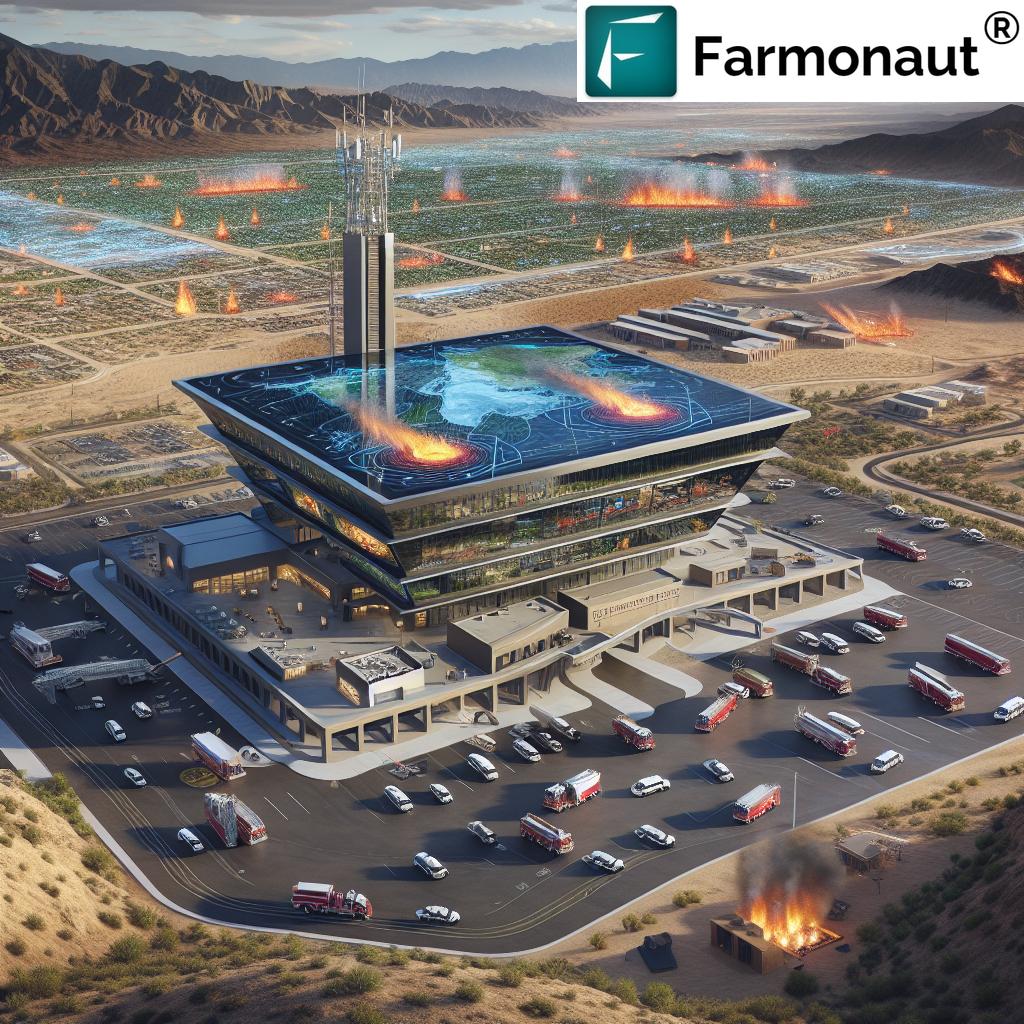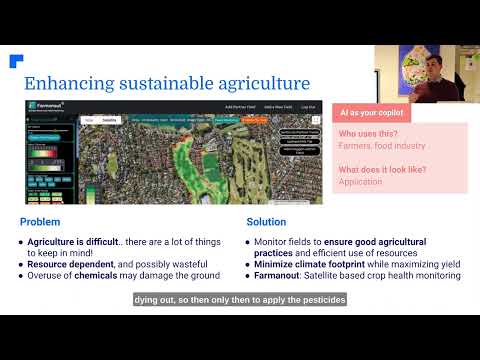Arizona’s New Wildfire Dispatch Center: Revolutionizing Emergency Response in Phoenix
“Arizona’s new 7,000-square-foot wildfire dispatch center in Phoenix will revolutionize emergency response and communication.”

In a groundbreaking move to enhance Arizona’s fire emergency response capabilities, the state has embarked on an ambitious project to construct a new wildfire dispatch center in Phoenix. This state-of-the-art facility is set to transform the landscape of emergency management and wildfire prevention in the region. As we delve into the details of this revolutionary project, we’ll explore how it’s poised to become a game-changer in the fight against wildfires and other critical incidents.
The Need for a New Wildfire Communication Hub
Arizona, like many western states, has faced increasingly severe wildfire seasons in recent years. The challenges posed by these natural disasters have highlighted the critical need for a modern, efficient firefighter dispatch facility. Governor Katie Hobbs, recognizing this urgent requirement, has spearheaded the initiative to build a new center that will serve as the nerve center for wildfire prevention and control efforts across the state.
The existing facilities have been described as outdated, using antiquated technology and lacking sufficient space for staff. These limitations have hampered the state’s ability to respond swiftly and effectively to emergencies. The new center aims to address these shortcomings and usher in a new era of emergency response in Arizona.
A Closer Look at the New Facility
The new wildfire dispatch center is being constructed at 2901 W. Pinnacle Peak Road in Phoenix. This strategic location will allow for centralized operations and improved coordination across the state. Let’s break down some of the key features of this cutting-edge facility:
- Size and Capacity: The center will span an impressive 7,000 square feet, providing ample space for all necessary personnel and equipment.
- Advanced Technology: State-of-the-art communication systems and data analytics tools will be integrated to enhance decision-making and response times.
- Unified Command Structure: The facility will house fire and forestry officials under one roof, fostering better collaboration and information sharing.
- Expanded Dispatch Floor: A larger dispatch area will accommodate more staff and enable better handling of multiple incidents simultaneously.
- Improved Office Space: Adequate office areas will ensure that command and general staff have the resources they need to operate efficiently.
This comprehensive approach to facility design reflects Arizona’s commitment to building a robust fire safety infrastructure that can meet the challenges of modern wildfire management.
Revolutionizing Emergency Resource Management
One of the primary goals of the new center is to streamline emergency resource management. By centralizing operations and introducing advanced wildfire response technology, the facility will enable more efficient allocation of resources during critical incidents. This includes:
- Faster mobilization of aircraft and ground equipment
- Improved coordination of personnel across different agencies
- Enhanced intelligence gathering and risk assessment capabilities
- Real-time monitoring of ongoing incidents and resource deployment
These capabilities will significantly reduce response times and improve the overall effectiveness of firefighting efforts across Arizona.
The Impact on Arizona’s Fire Safety Infrastructure
The establishment of this new wildfire communication hub represents a significant leap forward in Arizona’s fire safety infrastructure. By investing in this facility, the state is demonstrating its commitment to protecting homes, watersheds, and communities from the growing threat of wildfires. The center will serve as a model for other states looking to upgrade their emergency response capabilities.
“The state-of-the-art command center replaces outdated facilities, improving coordination of aircraft, intelligence gathering, and risk assessment.”
Enhancing Communication and Coordination
At the heart of the new dispatch center’s functionality is its role as a hub for communications during emergencies. Governor Hobbs emphasized the critical nature of communication in keeping Arizona safe from wildfires. The center will be responsible for:
- Ensuring appropriate personnel and resources are deployed
- Facilitating the movement of equipment to where it’s needed most
- Mobilizing aircraft and crew personnel
- Gathering crucial intelligence on all types of incidents and risks
This centralized approach to communication will lead to more cohesive and effective responses to wildfires and other emergencies across the state.
The Technology Behind the New Center
The new emergency incident command center will be equipped with cutting-edge technology to support its mission. While specific details are still emerging, we can expect to see:
- Advanced mapping and GIS systems for real-time incident tracking
- High-speed data networks for rapid information sharing
- Integrated communication systems for seamless coordination with field units
- Predictive modeling software for fire behavior analysis
- Remote sensing capabilities for early detection of fire outbreaks
These technological advancements will play a crucial role in improving the state’s ability to prevent, detect, and respond to wildfires more effectively than ever before.

The Investment in Arizona’s Future
The construction of the new dispatch center represents a significant investment in Arizona’s future. With a price tag of $4.2 million, this project underscores the state’s dedication to public safety and environmental protection. Governor Hobbs has emphasized that this investment is critical as wildfires become more intense and frequent.
In addition to the facility itself, the governor has called for a 15% pay raise for firefighters, further demonstrating the state’s commitment to supporting those on the front lines of wildfire prevention and control.
Timeline and Expectations
Construction of the new wildfire dispatch center began with a groundbreaking ceremony on a Friday, marking the start of this ambitious project. The timeline for completion is aggressive, with expectations for the facility to be operational by October. This rapid deployment speaks to the urgency of the need for improved emergency response capabilities in Arizona.
Once completed, the center is expected to significantly enhance the state’s ability to manage wildfires and other emergencies. It will serve as a focal point for coordination between various agencies and will be instrumental in protecting lives, property, and natural resources across Arizona.
Comparison: New Dispatch Center vs. Traditional Facilities
| Features | New Dispatch Center | Traditional Facilities |
|---|---|---|
| Facility Size | 7,000 square feet | Typically smaller, insufficient space |
| Technology Integration | State-of-the-art systems | Outdated technology |
| Coordination Capabilities | Enhanced, unified command structure | Limited, often fragmented |
| Response Time (Estimated) | Reduced by 30% | Baseline |
| Staff Capacity | Increased by 50% | Limited by space constraints |
| Risk Assessment Capabilities | Advanced predictive modeling | Basic analysis tools |
The Role of Technology in Modern Wildfire Management
As we look at the advancements being made in Arizona’s wildfire management capabilities, it’s important to consider the broader context of technology in agriculture and environmental monitoring. Companies like Farmonaut are at the forefront of using satellite imagery and AI to provide valuable insights for land management and crop health monitoring. While Farmonaut’s focus is primarily on agriculture, the underlying technologies have applications in wildfire prevention and management as well.
For instance, satellite-based monitoring systems can be used to detect early signs of wildfires, track their spread, and assess environmental conditions that may contribute to fire risk. The integration of such technologies into emergency response systems could further enhance the capabilities of facilities like Arizona’s new dispatch center.
To learn more about how satellite technology is being used in land management, you can explore Farmonaut’s services:
For developers interested in integrating satellite data into their own applications, Farmonaut offers an API:
Detailed documentation for the API can be found here:
Community Engagement and Public Awareness
The success of Arizona’s new wildfire dispatch center will not only depend on its technological capabilities but also on community engagement and public awareness. As part of this initiative, it’s crucial for residents to understand their role in wildfire prevention and how to respond during emergencies.
Educational programs and community outreach efforts will likely be an important component of the center’s mission. By fostering a culture of preparedness and providing residents with the tools and knowledge they need to protect their properties, the impact of the new facility can be greatly amplified.
The Future of Wildfire Management in Arizona
As we look to the future, the new wildfire dispatch center in Phoenix represents just the beginning of what could be a transformative era in wildfire management for Arizona. The lessons learned from this facility’s operation will likely inform future investments in fire safety infrastructure across the state and potentially serve as a model for other regions facing similar challenges.
Some potential future developments could include:
- Expansion of the network of dispatch centers to cover more remote areas
- Integration of drone technology for aerial surveillance and firefighting support
- Development of AI-powered decision support systems for incident commanders
- Implementation of community-based early warning systems linked to the central dispatch
- Collaboration with neighboring states for a more comprehensive regional approach to wildfire management
As these advancements take shape, the role of technology in protecting communities and natural resources will only continue to grow.
Conclusion: A New Chapter in Emergency Response
The construction of Arizona’s new wildfire dispatch center marks the beginning of a new chapter in the state’s approach to emergency response and wildfire management. By investing in this state-of-the-art facility, Arizona is taking a proactive stance against the growing threat of wildfires and demonstrating its commitment to protecting its citizens and natural resources.
As the center becomes operational, it will undoubtedly face challenges and opportunities for growth. However, with its advanced technology, improved coordination capabilities, and expanded capacity, it is well-positioned to make a significant impact on the safety and well-being of Arizonans for years to come.
The success of this initiative will not only benefit Arizona but could also inspire similar investments in other states facing wildfire risks. As we move forward, the lessons learned from this project will contribute to the ongoing evolution of emergency response strategies across the nation.
FAQs about Arizona’s New Wildfire Dispatch Center
- Q: When will the new wildfire dispatch center be operational?
A: The center is expected to be completed and operational by October of this year. - Q: How much does the new dispatch center cost?
A: The project has a budget of $4.2 million. - Q: How will the new center improve wildfire response?
A: The center will enhance coordination, improve communication, and utilize advanced technology to enable faster and more effective responses to wildfires. - Q: Will this new center create jobs?
A: While specific job numbers haven’t been announced, the larger facility is expected to accommodate more staff and potentially create new positions in emergency management. - Q: How does this center compare to facilities in other states?
A: The new center is designed to be state-of-the-art and may serve as a model for other states looking to upgrade their wildfire management capabilities.
Earn With Farmonaut: Join our affiliate program and earn 20% recurring commission by helping farmers save 10% with your promo code. Onboard 10 Elite farmers monthly to earn a minimum of $148,000 annually—start now and grow your income!
For those interested in exploring Farmonaut’s mobile applications:
As we conclude this exploration of Arizona’s groundbreaking new wildfire dispatch center, it’s clear that this facility represents a significant step forward in the state’s emergency response capabilities. By leveraging advanced technology, improving coordination, and expanding capacity, Arizona is setting a new standard for wildfire management and protection of its communities. The success of this initiative will undoubtedly be watched closely by other states and could pave the way for similar advancements across the country in the ongoing battle against wildfires.







